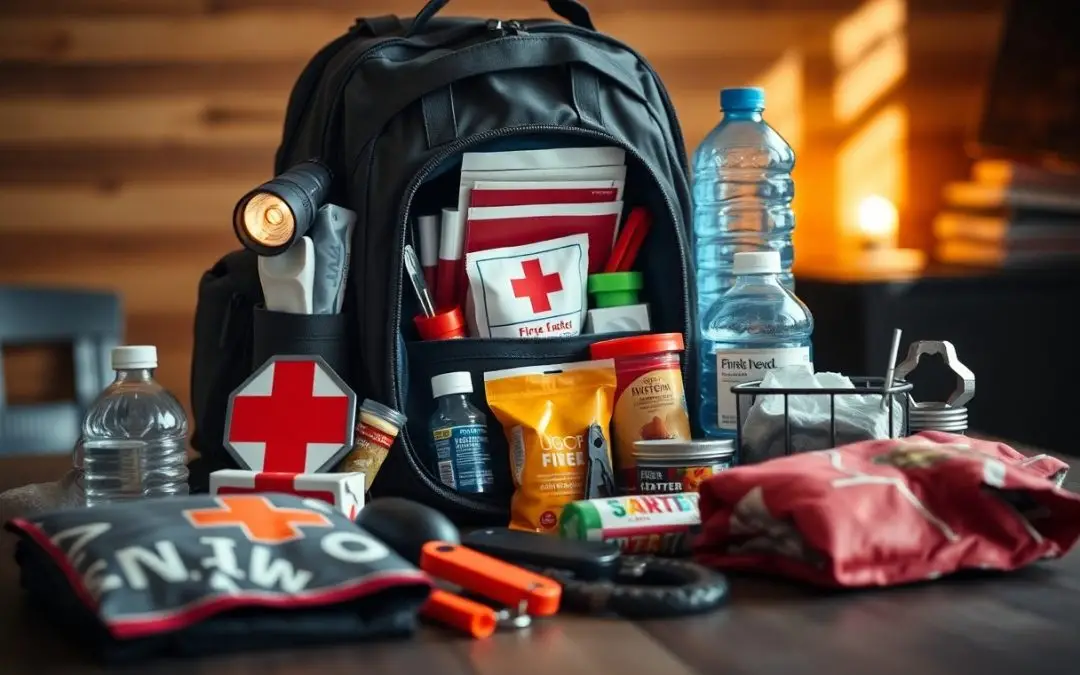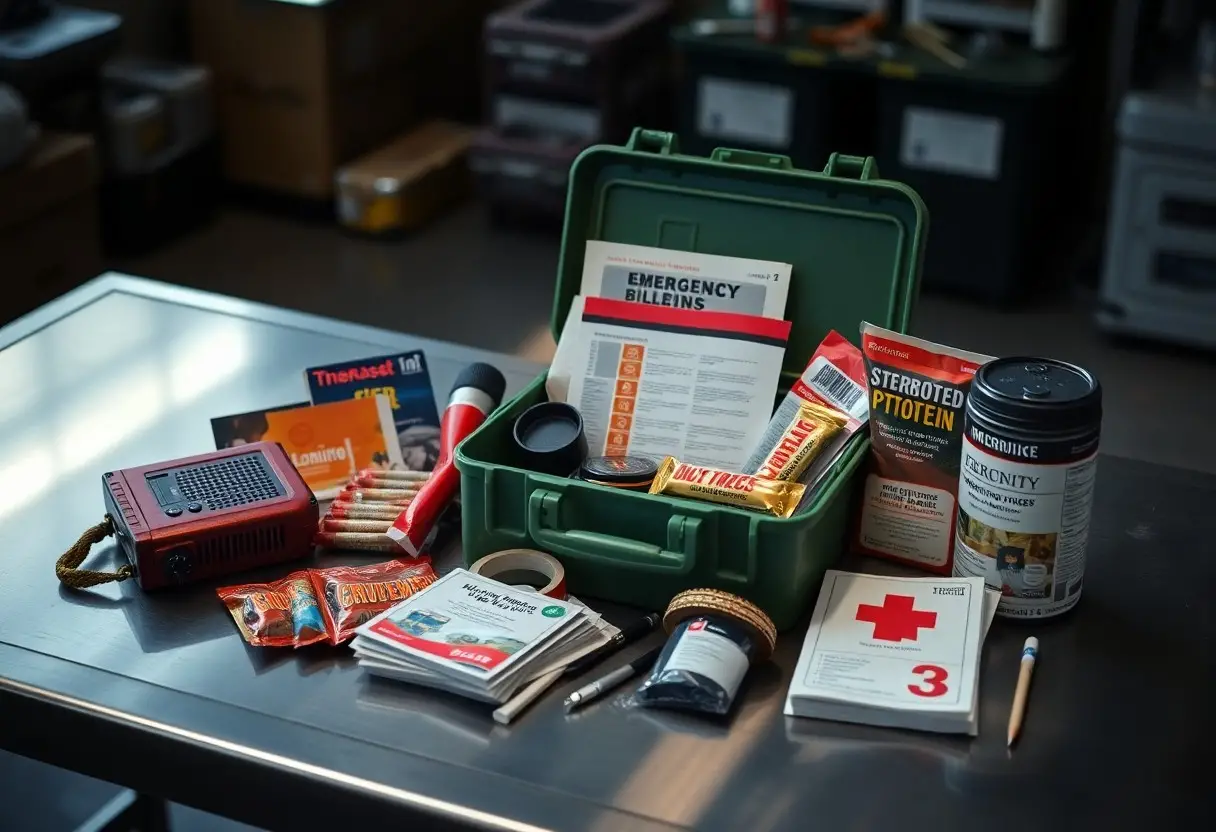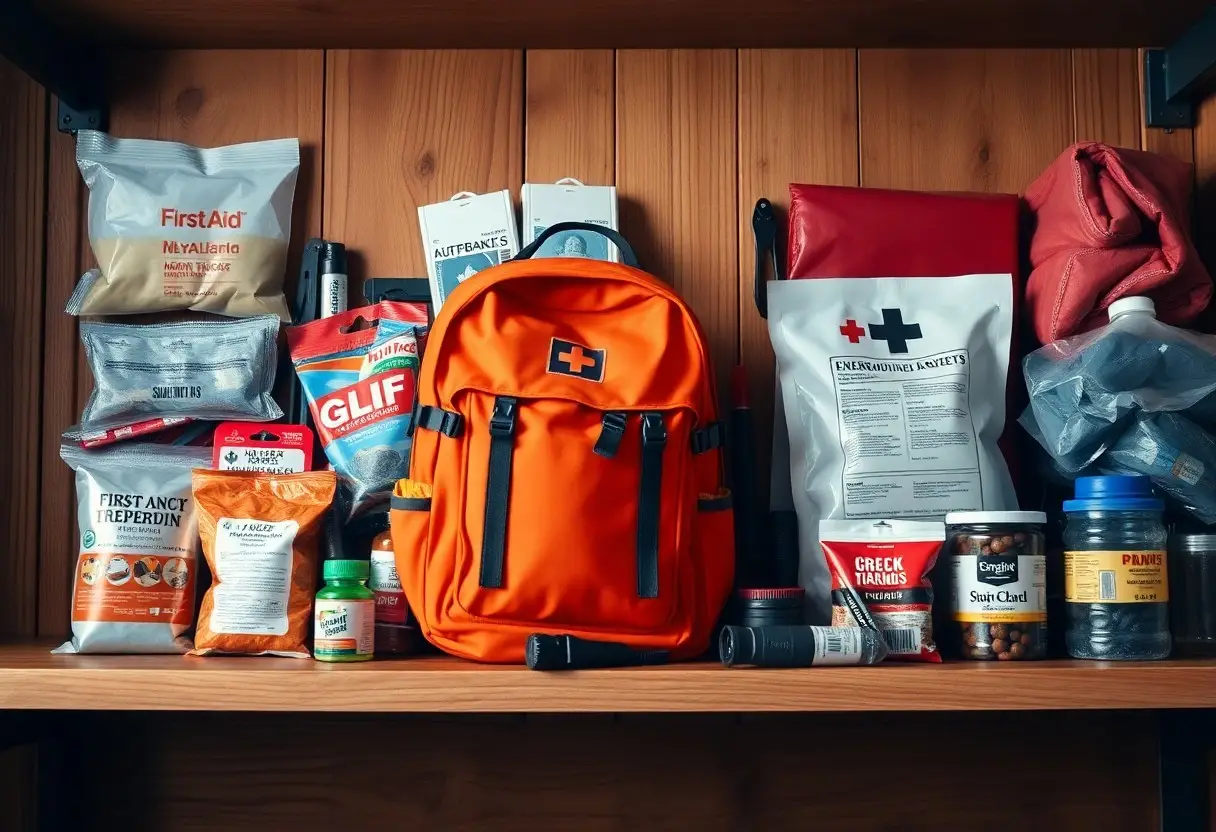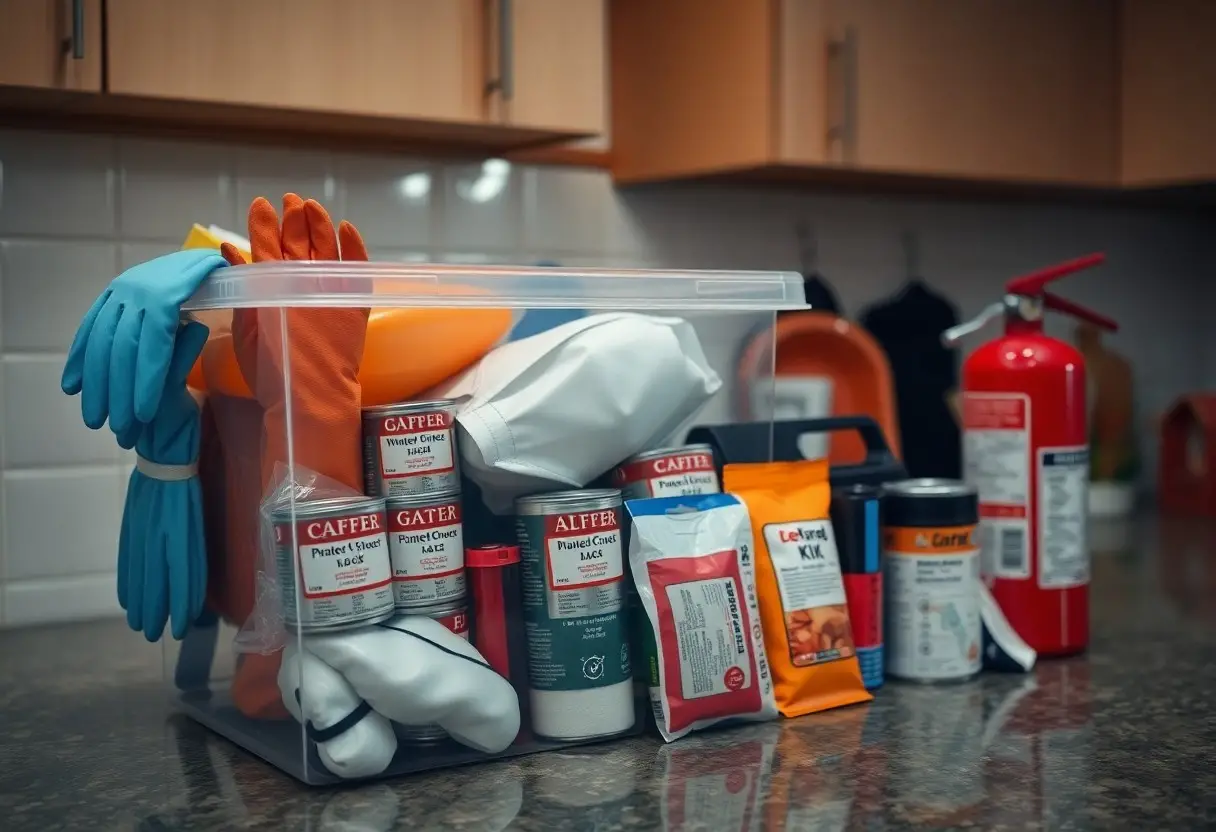Just as unexpected events can occur at any moment, being prepared can make all the difference in keeping you and your loved ones safe. Building the ultimate emergency preparedness kit will empower you to handle various situations, whether it’s a natural disaster, power outage, or other unforeseen circumstances. In this guide, you will discover necessary items to include, practical organization tips, and strategies for updating your kit regularly, ensuring that you are always ready to face any surprise life may throw your way.
Assessing Your Risks: What You Need to Prepare For
Understanding the specific risks associated with your location enables you to tailor your emergency preparedness kit effectively. By taking note of your environment, such as common natural disasters, industrial hazards, and local infrastructure, you can prioritize the supplies and tools that will be vital when facing an emergency. Factors such as climate, geography, and community preparedness initiatives also play an important role in determining your response strategies.
Identifying Potential Disasters in Your Area
Start by researching the types of disasters that are most likely in your region. Whether it’s hurricanes, earthquakes, floods, or wildfires, each disaster poses unique challenges. Local government websites often provide information on historical events and resources to help gauge your risks accurately. Using this knowledge, you can ensure your emergency kit contains appropriate items like water purification tablets for flooding or a NOAA weather radio for storms.
Evaluating Family Needs and Special Considerations
Your emergency preparedness plan should also factor in the specific needs of your family members. Consider any health concerns, dietary restrictions, or mobility issues that may require specialized supplies. For instance, if someone in your household requires prescription medications or has allergies, be sure to include those imperative items in your kit. Additionally, if you have children or pets, plan for their unique needs by stocking age-appropriate supplies, comfort items, and food that are suitable for their consumption.
Taking the time to evaluate your family’s unique circumstances can reduce stress during an emergency. If you have elderly relatives, consider including supplies that assist with mobility or communication aids. For children, engaging them in the preparation process can foster resilience and understanding. Make sure to include comforting items such as favorite toys or blankets. Addressing these needs upfront means your preparedness kit not only supports survival but helps maintain some semblance of normalcy during unsettling times.
Essential Supplies: What to Include in Your Kit
Your emergency preparedness kit should contain a variety of vital supplies that cater to basic human needs and safety. Make sure to stock your kit with adequate food, water, first aid items, tools, and personal documents. Customize your supplies based on your specific circumstances, such as the number of people in your household, local hazards, and the duration you may need to sustain yourself. By being thorough in your preparation, you increase your chances of staying safe and self-sufficient during unexpected emergencies.
Water and Food: Caloric and Nutritional Needs
Water should be prioritized in your kit; aim for one gallon per person per day, with a minimum three-day supply. Non-perishable food items like canned goods, granola bars, and freeze-dried meals provide vital nutrients. Focus on high-calorie options to sustain energy levels, considering that adults typically need about 2,000 calories daily. Rotate food and water regularly to ensure freshness and avoid expiration during long-term storage.
First Aid and Medical Supplies: Beyond Band-Aids
A well-stocked first aid kit goes beyond simple bandages. Include antiseptic wipes, gauze pads, adhesive tape, scissors, and a thermometer. Personal medications and hygiene items, such as hand sanitizer and gloves, are also vital. Don’t overlook specialized supplies like a snake bite kit or an emergency blanket. Customizing your first aid kit to your family’s needs ensures you’re adequately prepared for various medical situations.
Proactive planning for medical emergencies can lead to better outcomes. Start with a comprehensive first aid manual that instructs you on how to handle common injuries, such as sprains, burns, or cuts. Ensure that all family members are familiar with the location of your kit, as well as how to use its contents. Additionally, keep an updated list of emergency contacts and any medical histories or allergies that responders should know about, so you can act swiftly in critical situations.
Tools and Gear: The Must-Haves for Survival
Your kit should include vital tools and gear that enhance your survival capability. Key items include a multi-tool or knife, flashlight, battery or solar-powered radio, and duct tape. Also include items like rope or paracord, whistle, and portable phone charger. Each of these tools serves multiple purposes, aiding in everything from shelter construction to signaling for help, ensuring you are always ready for any challenge that may arise.
Among the vital tools, a multi-tool stands out for its versatility—combining pliers, blades, screwdrivers, and other useful gadgets in one compact device. A flashlight with extra batteries is vital not only for visibility but for signaling in low-visibility conditions. Don’t forget a reliable way to create fire, such as waterproof matches or a fire starter. These tools can profoundly increase your chances of surviving in emergencies, providing you with comfort and flexibility as situations evolve.
Organizing Your Kit: Best Practices for Efficiency
Efficient organization of your emergency preparedness kit can save valuable time in high-stress situations. Group similar items together, such as medical supplies, food, and tools, to streamline access. Consider having separate bags or compartments for importants versus non-importants, and prioritize items by frequency of use. Regularly check and update your kit to ensure everything remains functional and relevant. An organized kit isn’t just a good practice; it’s a vital step in readiness.
Choosing the Right Container for Your Supplies
Selecting a durable, waterproof container is key when organizing your supplies. Hard-shell cases or heavy-duty bags work well as they protect the items inside from moisture and impact. Look for containers with compartments or pockets for added organization, allowing you to store smaller items securely without cluttering the main space. Consider portability, as you may need to grab your kit quickly and move to safety.
Labeling and Accessibility: Making Your Kit User-Friendly
Clearly labeling containers and compartments enhances your kit’s accessibility during emergencies. Use large, easy-to-read labels to identify each section, such as “First Aid”, “Food & Water”, and “Tools”. This not only speeds up retrieval time but also helps others quickly grasp your kit’s contents if they need to assist.
For optimal accessibility, consider using color-coded labels or even a checklist of contents taped to the inside of the container lid. You can also place frequently used items at the top or in an easily accessible pocket, optimizing your kit’s design for fast response. Regularly practice retrieving items from your kit to ensure familiarity during an actual emergency, helping you avoid panic or confusion when seconds count.
Regular Maintenance: Keeping Your Kit Ready for Action
An emergency preparedness kit is only as good as its upkeep. Regular maintenance ensures that your supplies are effective and accessible when needed. Establish a routine schedule—preferably every six months—to inspect your kit thoroughly. This includes checking for missing items, replacing expired materials, and confirming that your gear functions properly. A proactive approach can make all the difference in an emergency situation.
Checking Expiration Dates and Refreshing Supplies
Expiration dates on food, medicine, and emergency supplies can sneak up on you. Set aside time to meticulously check these dates at least twice a year. For items approaching expiry, consider using them and replacing them with fresh supplies. This not only keeps your kit current but also allows you to maintain familiarity with the items in case of an urgent need.
Seasonal Adjustments: Adapting Your Kit Throughout the Year
Your emergency kit should evolve with the seasons, reflecting the unique challenges each season presents. Swapping out supplies like blankets for summer heat and warm layers for winter cold enhances your kit’s effectiveness. Additionally, consider seasonal hazards—hurricane supplies may be crucial in late summer, while snow shovels and ice melt products are valuable in winter months. Adjusting your kit accordingly ensures you’re prepared for specific conditions.
Seasonal adjustments go beyond simple swaps; think about your local climate and any prevalent risks during certain months. For instance, spring might demand allergy medications and a compact shovel for potential flooding, while fall could call for items to help with potential wildfires like fire-retardant materials. By tailoring your kit to the season, you enhance your preparedness and confidence in facing any challenge nature throws at you.
Building a Family Preparedness Plan: More than Just a Kit
Your family’s safety during emergencies depends on a well-thought-out preparedness plan that goes beyond assembling supplies. This plan involves identifying potential risks in your area, creating specific roles for family members during emergencies, and ensuring an effective response strategy. Preparing ahead of time helps instill confidence and peace of mind, allowing everyone to act quickly and efficiently when the need arises.
Communication Strategies During Emergencies
Establishing clear communication strategies is vital for keeping your family connected during an emergency. Designate a family meeting point in case you get separated, and agree on alternate ways to reach one another, such as through texting or social media. Make a list of emergency contacts, including out-of-town relatives, and ensure that everyone knows how to access this information quickly.
Practice Drills: Ensuring Everyone Knows Their Role
Regular practice drills familiarize your family with the emergency plan, reinforcing individual responsibilities and increasing confidence in execution. Schedule drills for various scenarios, like fire evacuations or earthquake preparedness, allowing everyone to physically enact their roles. This repetition helps embed important actions into memory, making real emergencies less stressful and more manageable.
Incorporating real-life scenarios during practice drills can significantly enhance your family’s preparedness. For example, you might simulate a scenario where the electricity goes out, prompting the family to gather in designated safe zones, utilize their emergency kit, and communicate their status through established channels. Rotate assignments so every member gains hands-on experience in their designated roles, whether it’s helping younger relatives or managing supplies. This way, everyone learns the importance of teamwork while building confidence in their ability to respond effectively in a crisis.
Final Thoughts: Empowering Yourself and Your Community
Personal preparedness extends beyond individual efforts; it fosters community resilience. Educate your family, friends, and neighbors about your emergency plan and resource sharing. Organize local workshops or community meetings to discuss preparedness, where you can exchange ideas and resources. Studies show that communities with high preparedness awareness experience fewer casualties during disasters. Encourage local businesses to contribute to emergency efforts, such as offering discounts on supplies. Together, you can create a robust network of support that not only enhances your own readiness but strengthens the fabric of your entire community.



